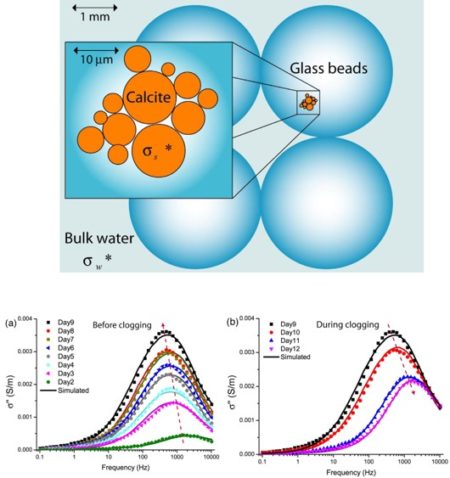
A: Complex conductivity model of the porous medium with calcite precipitation.
Imaginary conductivity of calcite as a function of time in days before (A) and after (B) the pore clogging
Scientific Achievement
Complex conductivity signals of calcite provides an in-situ monitoring approach for its precipitation, yet the polarization mechanism is not clear. We developed a mechanistic model considering the electrochemical polarization of the Stern and diffuse layers surrounding calcite particles.
Significance and Impact
The model provides a mechanistic understanding of complex conductivity signals from in-situ calcite precipitation that often occurs during subsurface reactional processes. This is key to develop geophysical monitoring for dynamic monitoring of subsurface biogeochemistry.
Research Details
- The experimental data sets are provided by Wu et al. (2010)
- Numerical modeling is based on the stern layer electrochemical polarization model at the calcite – fluid interface
- Comparison between the model simulation and experimental results provides validation of the model.
Citation
Leroy, P., Li, S., Revil, A., Wu, Y., 2017, Modelling the Evolution of Complex Conductivity During Calcite Precipitation on Glass Beads, Geophys. J. Int. 209,
123–140, DOI: 10.1093/gji/ggx001
